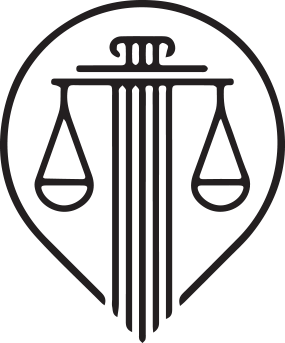Reaffirm My Car Loan: What Reaffirmation is So You Make the Best Decision about Your Car and Other Assets in Wisconsin Bankruptcy
Are you considering bankruptcy in Wisconsin and wondering about the fate of your car loan? In this comprehensive guide, we’ll dive into the intricacies of reaffirmation agreements and how they can impact your vehicle and other assets during Chapter 7 bankruptcy. We’ll answer what it means if you say you want to “reaffirm my car loan.” We’ll also explore the steps involved in reaffirming a car loan, the pros and cons of reaffirmation agreements, and what to expect in the process. Plus, we’ve included a FAQ section to address common queries. If you’re in Wisconsin and need legal assistance, don’t hesitate to contact attorneys at Dahlberg Law Group for expert guidance tailored to your situation.
Reaffirm My Car Loan: Understanding Reaffirmation Agreements in Bankruptcy
When filing for bankruptcy, a debtor may choose to remain legally obligated to pay a debt that would typically be discharged. This choice is known as reaffirming a debt. It’s essential to note that reaffirming a debt is entirely voluntary; debtors are not obligated to reaffirm any debt.
The Bankruptcy Code does allow debtors to reaffirm debts, but these agreements are enforceable only if they comply with specific procedures outlined in Local Rule 4008-1. Reaffirmation agreements typically require a hearing, but this requirement can be waived under certain conditions.
Reaffirm My Car Loan: What are Reaffirmation Agreements?
Reaffirmation agreements play a crucial role in Chapter 7 bankruptcy cases in Wisconsin, particularly concerning secured debts like car loans. When you file for Chapter 7 bankruptcy, you’ll face three options for dealing with secured debts:
- Redeem the Collateral: Pay off the debt’s current value, usually a reduced sum, to keep the collateral (e.g., your car).
- Surrender the Collateral: Return the collateral (e.g., car) to the lender, thereby discharging the debt.
- Reaffirm the Debt: Continue making payments on the debt and keep the collateral as if bankruptcy never occurred.
Secured debts often involve assets like cars (collateral for vehicle loans) and houses (collateral for mortgages). While bankruptcy can lead to the discharge of your debts, failing to make payments on secured debts can result in the creditor repossessing their collateral, either through repossession or foreclosure.
Reaffirmation comes into play when you wish to retain these assets and continue making payments. Creditors are generally willing to accept reaffirmation agreements because they prefer to receive payments rather than repossess assets.

Reaffirm My Car Loan: Steps for Reaffirming a Car Loan in Chapter 7 Bankruptcy
If you’re considering reaffirming your car loan during Chapter 7 bankruptcy, several critical steps should guide your decision:
1. Protect Your Vehicle Equity: Determine whether you can safeguard the equity in your vehicle through bankruptcy exemptions. Exemptions vary by state and might not fully cover your car’s equity.
2. Check Your Loan’s Current Status: Ensure that your car loan is up-to-date, as falling behind on payments can complicate reaffirmation.
3. Evaluate Affordability Post-Bankruptcy: Assess your financial situation to determine if you can continue making car payments after bankruptcy.
4. Assess the Need for a Reaffirmation Agreement: Decide whether reaffirming the debt is in your best interest. Consider factors like the collateral’s value, the debt amount, and your future financial plans.
5. Court Approval: Understand that reaffirmation agreements must be approved by the bankruptcy court, which will assess whether the agreement is reasonable and not an undue hardship.
Pros and Cons of If I Chose to Reaffirm My Car Loan (Reaffirmation Agreements)
Reaffirmation agreements come with their own set of advantages and disadvantages. Your decision to should consider your specific financial circumstances and goals when you are considering, “Should I reaffirm my car loan?”
Pros of Choosing to Reaffirm My Car Loan:
- Securing Interest Rates and Payments: Reaffirming allows you to lock in your interest rate and payment terms, which can be favorable compared to obtaining new financing post-bankruptcy.
- Maintaining Current Loan Terms: Reaffirmation enables you to stick with the existing loan terms, avoiding the need to start over with a new loan, which might extend the payment period.
- Credit Rebuilding: Timely payments on reaffirmed debts can contribute to rebuilding your credit after bankruptcy.
Cons of Choosing to Reaffirm My Car Loan:
- Obligation to Repay: You’ll remain legally obligated to repay the debt even after bankruptcy, losing the benefit of debt discharge.
- Risk of Default: If you miss payments on the reaffirmed debt, the lender can repossess the collateral, leaving you liable for any deficiency balance after the sale.
Frequently Asked Questions about Choosing to Reaffirm My Car Loan in Chapter 7 Bankruptcy
Q1: What Is a Reaffirmation Agreement?
A reaffirmation agreement is a voluntary legal contract that allows a debtor in bankruptcy to continue making payments on a debt, such as a car loan, thereby retaining the collateral. It ensures that the debt will not be discharged in bankruptcy.
Q2: Can I Keep My Car If I Make Loan Payments After Chapter 7?
Whether you can keep your car without reaffirming the debt depends on your lender’s policies. Some lenders may permit you to keep the car by continuing payments without a reaffirmation agreement. However, without a contract, you won’t be obligated to pay if you can’t continue making payments.
Q3: What Happens If I Don’t Reaffirm My Car Loan?
Without a reaffirmation agreement, the lender retains the option to repossess the car at any time, even if you’re current on payments. Additionally, payments made without a reaffirmation agreement typically won’t be reported to credit bureaus.
Q4: How Can I Protect My Car Equity During Chapter 7 Bankruptcy?
To safeguard your car’s equity, explore bankruptcy exemptions available in your state. If these exemptions don’t fully cover the equity, you may need to negotiate with the bankruptcy trustee to pay the nonexempt portion to retain the car.
For step-by-step guidance on the bankruptcy process in Wisconsin, visit the U.S. Bankruptcy Court for the Western District of Wisconsin FAQ page. Additionally, you can find relevant forms for download at the Wisconsin Court System’s Pro Se Forms.
Navigating the complexities of bankruptcy and reaffirmation agreements requires expert legal guidance. If you’re in Wisconsin and need assistance with your bankruptcy case, don’t hesitate to contact the experienced attorneys at Dahlberg Law Group. Our legal team, including attorneys like Steve Eichsteadt and other dedicated professionals, is here to help you make the best decisions for your financial future.

